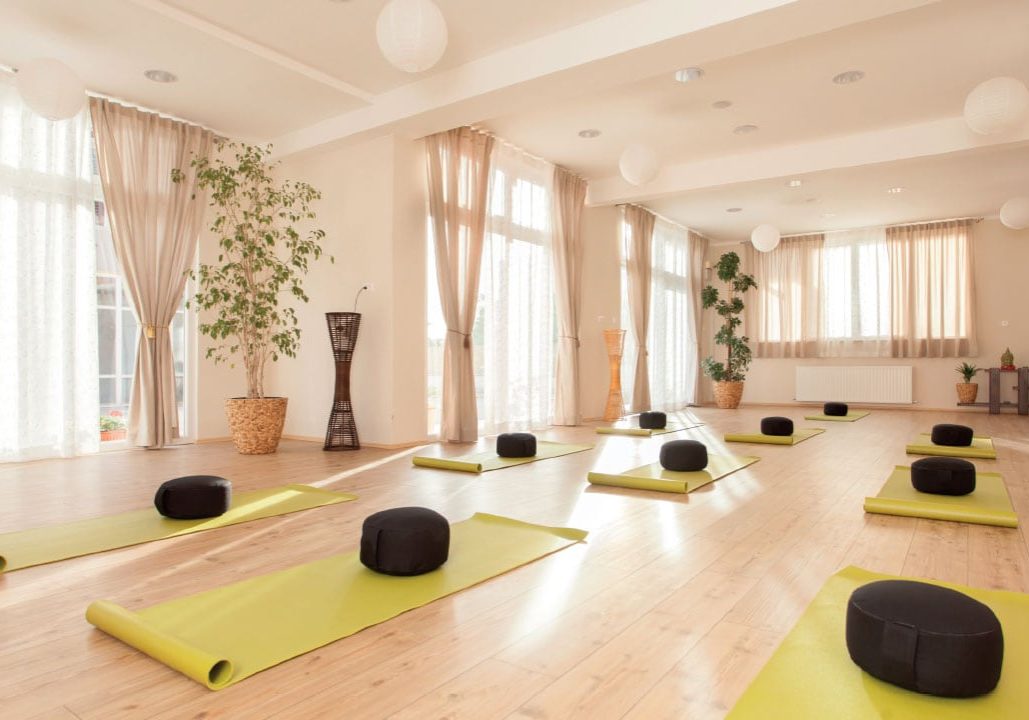
Heating the hot studio
Reliable humidity control for a hot yoga studio
Hot yoga, as well as Bikram Yoga, requires strict control over the temperature and humidity of the environment as it’s designed to mimic the climate of India. Typically, a hot yoga studio needs to be maintained at a temperature of 35°C to 40°C, with a relative humidity (rh) of at least 40%. The humidity level is particularly important, because at 40%rh perspiration won’t evaporate as quickly which prevents the body from being cooled. This increases the amount of healthy sweating, makes stretching more effective and helps to prevent injuries.
Humidity Solutions, a leading independent supplier in humidity control, has been working with many hot yoga studios across the UK to achieve the right conditions for this type of practice. Its most recent customer, Yoga in the Lanes, is a Bikram Yoga school based by the seafront in Brighton. The School is owned and operated by husband-and-wife team Simon and Bridgett Ane (BA) Goddard who both regularly practice and teach. In 2020, just before the pandemic, they moved into their new yoga school and soon realised the heaters they were using to heat the studio weren’t good enough. “When you run a hot yoga studio, the last thing you need is the room not being hot enough” says Simon. The couple soon turned to Humidity Solutions for help.
When Simon and BA moved into the studio, they purchased three plug-in heaters to heat the studio to the optimal temperature of 40°C. However, they soon realised that the heaters weren’t doing the job. There were a few reasons for this. Firstly, the heaters were placed up high to avoid heat being directly applied to the skin of the yoga practitioners, and secondly to save valuable floor space being taken up by equipment. The problem is that hot air rises so the ground level temperature was only reaching 32°C at best. To add to the problem, fresh air was being brought into the space through a heat recovery unit and cooling the temperature of the room as the heaters could not cope with the load. Providing fresh oxygen into the space is necessary to be able to breathe so it was impossible to reach a 40°C room temperature.
The reliability of the equipment was another factor adding to the issue. Three to four months after installing the heaters, they began to break down. This meant they couldn’t rely on all three heaters working at the same time. The heaters were placed in three corners of the room, which meant there was no consistency of temperature from one side to the other. As the UK lockdown began and classes at the yoga school moved online, Simon knew it was time to investigate a new solution and contacted Humidity Solutions for help and advice.
Before coming to Humidity Solutions, Simon considered alternative ways to heat the space. These alternatives included infrared heaters suspended from the ceiling but these were soon ruled out on basis that they wouldn’t achieve the results. Simon and BA were also after a solution that would be safe for students and were concerned that infrared heaters could potentially inflame any health issues the yoga practitioners may have.
Humidity Solutions managing director and humidification expert, John Barker, recommended the Vesuvius unit to Yoga in the Lanes. The Vesuvius has been uniquely designed and developed by the Humidity Solutions team specifically for applications like this. The unit has many benefits including stable and reliable humidity and temperature control, energy efficiencies, reliability and durability (it has a typical lifespan of 10-15 years) and it doesn’t take up too much space. The Vesuvius was installed into a small kitchen space at the back of the studio. “One of the biggest selling points was the compactness of the unit, the fact it could fit into our room and take up no more space than a fridge freezer was a big advantage,” said Simon.
The Vesuvius works together with the heat recovery unit to maintain the heat within the room. The fresh air was routed from the heat recovery unit into the Vesuvius, having the capacity to heat and humidify. That meant that the space was always maintained at the set temperature and fresh oxygen was also being provided. The system also provides preloaded settings which automate the system to turn on and off, so Simon and BA have complete control of the environment whenever they need it. In just 20 minutes the room can reach the optimal temperature of 40°C, which is an incredible time and energy saving from using plug-in heaters.
As well as providing the Vesuvius, Humidity Solutions also assisted with the duct work to help soften the sound of the equipment which was located right next to the yoga studio. Attenuators were installed to the duct work to dampen the sound and remove any concerns that the noise could distract from the calmness of the yoga practice.
Simon and BA are delighted with the consistency and reliability from the Vesuvius unit and have already noticed a difference in their customers’ reaction. Simon said: “We want our customers to feel the heat when they walk in, it heightens their experience and is what brings them back. Since we’ve installed the Vesuvius, we can notice the difference in our customers’ reaction”. Besides the performance of the unit, Simon also praised Humidity solutions for their outstanding advice, customer service and speedy delivery and installation to get their studio up and running in time to welcome their student back after the lockdown regulations.
John Barker, commented: “Humidity Solutions is all about providing the right solution to the customer through expertise, equipment and installation. We are thrilled that Yoga in the Lanes now have the equipment they need to provide the best hot yoga experience for their students and are proud to be involved in the project”.
For more information on how to create the perfect environment for Hot Yoga and Bikram Yoga, contact Humidity Solutions at: info@humiditysolutions.co.uk




